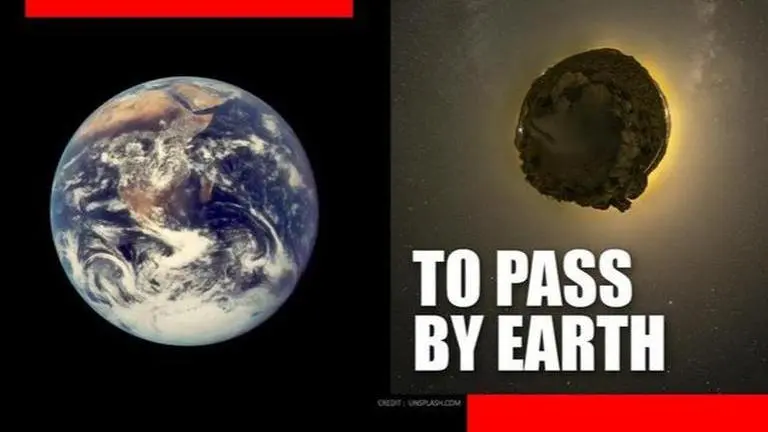Updated 2 June 2020 at 19:06 IST
NASA says 5 asteroids to cruise past Earth this week; here's the India timings
NASA has said at least five asteroids are headed towards Earth this week, which will give curious minds yet another thing to watch out for from their telescope
- Science News
- 3 min read

American space agency NASA has said that at least five asteroids are headed towards Earth this week, which will give curious minds yet another thing to watch out for from their telescope. According to NASA’s Center for Near-Earth Object Studies (CNEOS), four of the near-Earth objects (NEOs) are due to fly past the planet on Tuesday, June 2 (Wednesday in India's case).
Five asteroids
Kicking things off will be the 108-foot wide 2020 KK7 asteroid that will fly past the planet at 2:13 pm India time (IST) on Wednesday. This asteroid will cruise along at a speed of 34,000 mph at a distance of roughly 319,000 miles, or just beyond the Moon.
The next will be 115 feet wide 2020 KD4, hurtling at a speed of 12,000 mph, at 6:17 pm IST. This will cross Earth at a distance of 2.5 million miles.
Advertisement
The 144-foot wide 2020 KF, biggest among them all, will be flying at 24,000 mph some 2.9 million miles away at 9:30 pm IST.
The fourth asteroid to fly past Earth will be the 105-feet wide 2020 KJ1, cruising at 11,000 mph at 12:27 am on Thursday, passing some 1.3 million miles from the Earth at its closest point.
Advertisement
Then, after a brief respite, an asteroid potentially taller than New York’s Empire State Building and the London Eye combined, 2002 NN4, will zoom by on Sunday, June 7. This NEO will pass us at a very safe distance of 3,168,993 miles and will measure between 820ft and 1870ft, based on its brightness and the way it reflects light.
What is a near-Earth object?
According to NASA, a near-Earth object (NEO) is an asteroid or comet whose orbit brings it into or through a zone between approximately 91 million and 121 million miles (195 million kilometers) from the Sun, meaning that it can pass within about 30 million miles (50 million kilometers) of Earth’s orbit. Like the planets, asteroids and comets orbit the Sun.
Although the vast majority of NEOs that enter Earth’s atmosphere disintegrate before reaching the surface (and more than 100 tons of dust particles disintegrate in Earth’s atmosphere daily), those NEOs that are larger than around 98 to 164 feet (30 to 50 meters) in size and could cause widespread damage in and around their impact sites. A potentially hazardous object (PHO) is a near-Earth object whose orbit brings it within 4.7 million miles (7.5 million km) of Earth’s orbit, and is greater than 500 feet (140 meters) in size.
(With inputs from agencies)
Published By : Shubhayan Bhattacharya
Published On: 2 June 2020 at 19:06 IST
